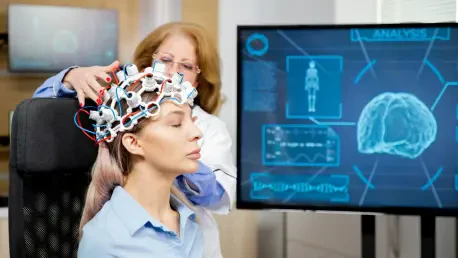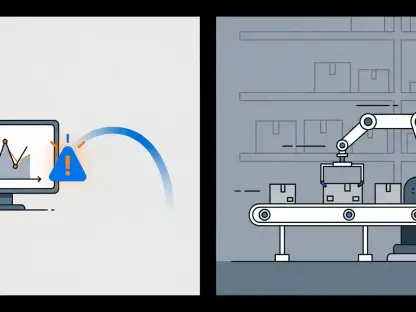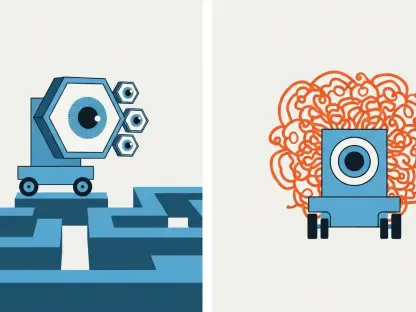Have you ever considered whether the hand you favor for writing or throwing a ball could influence the way your brain interprets the world around you, revealing hidden patterns in cognitive processing? A fascinating study from Cornell University has uncovered compelling evidence that handedness—whether someone is right-handed or left-handed—plays a significant role in shaping visual perception. This research reveals that the brain processes visual details differently based on which hand is dominant, challenging long-held beliefs about how neural wiring is established. It’s not merely a matter of physical preference; the findings suggest that the everyday actions performed with the dominant hand may sculpt cognitive functions in profound ways. At the core of this discovery lies a striking difference in how the brain’s hemispheres specialize in visual input. For most right-handed individuals, one side of the brain focuses on fast, detailed visuals, while the other handles slower, broader images. Intriguingly, this pattern reverses for left-handers, opening up new questions about the dynamic interplay between physical behavior and mental processing.
Unraveling the Link Between Handedness and Vision
The connection between handedness and visual perception is far from a trivial curiosity; it points to fundamental differences in brain organization. The Cornell study, involving nearly 2,000 participants, demonstrated that right-handed individuals typically process high-frequency visual information—such as rapidly changing stimuli—in the left hemisphere, while the right hemisphere manages low-frequency, static visuals. For left-handers, this specialization is mirrored, with the right hemisphere taking on high-frequency tasks. This reversal isn’t just a quirk; it suggests that the brain adapts to the physical tendencies of the body in ways previously underestimated. Such findings push against static models of neural development, emphasizing that personal habits and repetitive actions could be key drivers in how sensory input is handled. This perspective invites a deeper exploration into how much of human cognition is molded by routine physical interactions with the environment, rather than being solely predetermined by biology.
Beyond the basic observation of hemispheric differences, the implications of this research extend into understanding individual variability in perception. The study highlights that visual processing isn’t a one-size-fits-all mechanism but varies significantly based on something as fundamental as which hand is used most often. This variability was evident in experiments where participants reacted to visual stimuli presented in different fields of vision, corresponding to opposite brain hemispheres. The results consistently showed faster processing of detailed, high-frequency shapes in the hemisphere opposite the dominant hand. This pattern underscores a tailored neural efficiency, where the brain seems to cluster related sensory and motor functions together for optimal performance. It’s a compelling indication that the human brain is not just a passive receiver of information but an active system shaped by lived experience, adapting to the specific demands placed upon it through daily activities.
Exploring the Action Asymmetry Hypothesis
Central to the Cornell research is the “action asymmetry hypothesis,” a theory that ties brain specialization to the motor actions performed by the dominant hand. According to this idea, the brain’s visual processing isn’t fixed from birth or linked to unrelated cognitive functions like language. Instead, it develops dynamically through the repetitive tasks carried out with the dominant hand. Consider a common action like hammering a nail: the dominant hand executes quick, precise movements, while the other stabilizes the object. Over time, these distinct roles may condition the brain to process similar visual inputs—rapid changes for the dominant side’s hemisphere and steadier visuals for the other. This hypothesis was tested through experiments showing that right-handers process fast-changing visuals in the left hemisphere, while left-handers show the opposite pattern, aligning with their dominant hand’s influence.
This theory represents a significant shift from traditional views of brain organization, moving toward a model that prioritizes experience over innate wiring. The action asymmetry hypothesis suggests that neural specialization is a product of continuous feedback between physical behavior and sensory processing. For instance, the constant engagement of the dominant hand in high-frequency actions likely reinforces the corresponding hemisphere’s ability to handle similar visual stimuli. This adaptive process was evident in the study’s findings, where participants’ reaction times to visual tasks mirrored the expected hemispheric roles based on their handedness. Such insights challenge the notion of a rigid brain structure, instead painting a picture of a highly plastic organ that molds itself to the unique patterns of an individual’s life. This perspective not only deepens the understanding of visual perception but also raises questions about how other sensory domains might be influenced by motor habits.
Disentangling Visual and Language Processing
One of the most striking revelations from the Cornell study is the clear separation between visual perception and language processing in the brain. Earlier theories often linked the brain’s specialization for visual details to language functions, which are predominantly handled by the left hemisphere in most people, regardless of handedness. However, this research disproves that connection by showing that while language processing remains consistent across individuals, visual processing reverses based on dominant hand usage. This distinction is crucial as it highlights that motor actions, rather than linguistic tendencies, are the primary influencers of how visual information is organized in the brain. It’s a finding that reframes the understanding of hemispheric roles, suggesting that different cognitive systems can operate independently despite sharing neural real estate.
This decoupling of visual and language processing carries broader implications for neuroscience. It indicates that the brain’s organization is not a monolithic structure dictated by a single overarching principle but rather a complex network influenced by specific behavioral inputs. The study’s experiments, which included auditory tasks to confirm language laterality, reinforced that high-frequency sound processing for speech stays in the left hemisphere for both right- and left-handers. Meanwhile, visual processing followed a completely different pattern tied to handedness. This separation underscores the unique role of physical interaction in shaping perception, distinct from other mental functions. It also prompts a reconsideration of how various brain systems interact—or don’t—when it comes to processing the vast array of stimuli encountered daily, suggesting a more modular approach to understanding cognitive specialization.
The Role of Daily Habits in Neural Development
Delving deeper into why handedness affects visual perception, the research points to the mundane yet powerful impact of everyday activities. When the dominant hand is used for tasks requiring speed and precision—such as writing, cutting, or throwing—it generates a steady flow of high-frequency sensory feedback to the opposite brain hemisphere. Over years of repetition, this input likely tunes that hemisphere to excel at processing similar fast-paced visual information. Conversely, the non-dominant hand often takes on stabilizing roles, which may influence the other hemisphere to focus on slower, low-frequency visuals. This action-perception loop provides a practical explanation for the observed differences between right- and left-handers, grounding abstract neural concepts in tangible behavior.
Interestingly, the study also noted that low-frequency visual processing doesn’t always reverse as clearly as high-frequency processing across handedness. The researchers suggest this may be due to the flexibility of stabilizing tasks, which can often be performed by either hand, thus diluting the need for strict hemispheric specialization. This subtlety reveals the intricate balance in how actions shape the brain, indicating that not all perceptual functions are equally tied to motor patterns. It also opens up avenues for further investigation into which specific activities have the most significant impact on neural organization. Such insights could inform tailored approaches in fields like education or therapy, where understanding individual differences in perception might enhance learning strategies or rehabilitation techniques for those adapting to changes in hand use after injury.
Looking Ahead: Implications and Future Research
Reflecting on the past contributions of this research, the Cornell study provided a transformative lens through which to view brain adaptability. The evidence that handedness influenced visual perception through the action asymmetry hypothesis reshaped traditional notions, showing that lived experiences were as critical as biological predispositions in forming cognitive patterns. The findings, which highlighted a clear reversal in hemispheric specialization based on dominant hand usage, underscored the brain’s remarkable plasticity and its capacity to adapt to routine behaviors. This work laid a robust foundation for understanding how personal habits could dictate sensory processing, offering a nuanced perspective on individual differences in cognition that had often been overlooked.
Moving forward, the implications of these discoveries invite exciting possibilities for future exploration. Researchers are encouraged to investigate whether similar action-based reversals occur in other sensory domains, such as auditory processing, and how the brain might reorganize after significant changes in hand usage, like those following a stroke. These studies could inform innovative rehabilitation strategies that leverage motor behavior to retrain perceptual systems. Additionally, tailoring educational or ergonomic approaches to account for handedness might enhance outcomes by aligning with natural cognitive tendencies. As neuroscience continues to unravel the dynamic interplay between action and perception, the potential to apply these insights in practical settings grows, promising a deeper appreciation of the brain’s adaptability to the unique ways individuals interact with their world.









